|
|
 Lee
Duquette barked like a dog - Bad Dog! Lee
Duquette barked like a dog - Bad Dog!
|
The pumpkin head scarecrow is
laughing at Lee Duquette |
|
|
Check out the sign below: How can the deck temperature be 110 degrees on a cold 50 degree weather day????
Does this mean that if the two RV Gypsies get cold, can they just sit down on the deck and get warm? |
|
FUN FACTS:
-
At 1.28 miles, Walkway State Park is the world's longest elevated pedestrian bridge.
-
The Walkway's concrete deck is comprised of 973 prefabricated panels, each weighing up to 15 tons.
- The Walkway soars 212 feet above the Hudson River.
- More than 81,000 light-emitting diodes (LEDs) light the bridge for occasional night time use and require less than $1.80 an hour of electricity.
- Nearly 1 million rivets hold the bridge's 20,000 tons of steel together
- more fun facts found on the photos of signs below |
|
Walkway Over The Hudson State Historic Park sign and The Poughkeepsie-Highland Bridge |
|
|
Looking down over the bridge's railing at the fall colors |
|
|
The Walkway soars 212 feet above the Hudson River. |
|
|
|
|
Below: The two RV Gypsies watched a train go by the
Mariner's Restaurant where the they plan on stopping to eat after
their bridge walk.
|
|
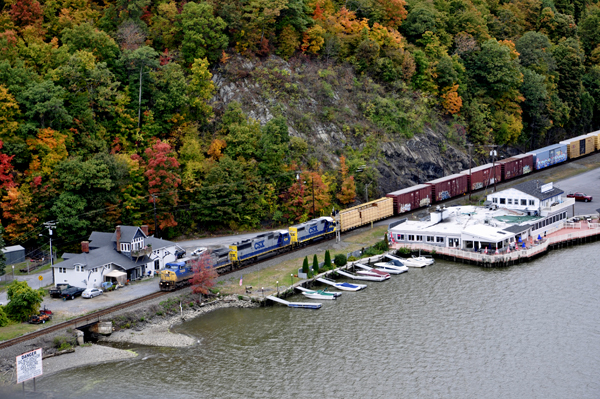 |
Below: A look across at
the Franklin D. Roosevelt Mid-Hudson Bridge |
|
|
|
Below: The two RV Gypsies
on the Poughkeepsie-Highland Bridge with the Franklin D. Roosevelt
Mid-Hudson Bridge in the background on a cold day; only 50 degrees
and very windy, with sprinkles of rain. The wind really made it cold. |
|
|
Below: Looking down, the two
RV Gypsies noticed a small waterfall under the road, and as they continued
their walk across the bridge, they did not see any sign of a river
on the other side of that road - so where was the waterfall coming
from? |
|
Below: Signs on the bridge
with history of the two bridges |
The Mid-Hudson Bridge was renamed the Franklin D. Roosevelt Mid-Hudson Bridge in 1994. Over 13,645,000 cars and trucks used the bridge in 2008. |
|
Donor appreciation railing |
|
The largest ships on the Hudson are up to 750 feet long
and 105 feet wide. They carry road salt, grain, and
gypsum as well as heavy equipment, steel, scrap metal,
wood pulp molasses, cocoa beans, and sugar. |
|
Sloops were the primary means of travel
and shipping on the river,
the "18 wheelers" of the 19th century.
A sloop is a sailboat with a single mast
placed towards the front of the boat. |
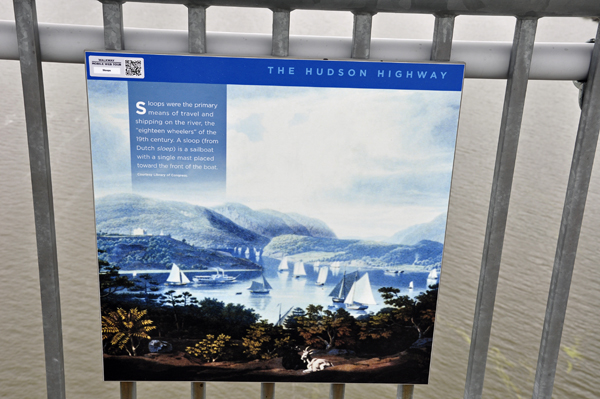
|
Massive timber cribs resting on the river's bedrock support the bridge's stone piers. Crib construction was difficult because the Hudson is 50-60 feet deep and the sediment is very thick. |
|
The Poughkeepsie-Highland Bridge is a
National Historic Civil-Engineering Landmark |
|
|
Below: A photo of a sign and photo on the bridge showing how bridge workers installed one of the 973 precast, 15-ton concrete Walkway panels, summer 2009. |
|
Below: A photo of a sign on the bridge: "Balanced 130 feet above the river, ironworkers
Bill Knape and Brian Langlitz removed and replaced deteriorated sections of the bridge's truss span,
spring 2009." |
|
When the two RV Gypsies reached the far side of the bridge, they saw a sign warning them that thunderstorms were forecast for this date and the bridge would then be closed, and everyone would be told to exit at the closest gate. The two RV Gypsies realized how awful it would be if that should happen while they were not near the side of the bridge that their car was parked at. The bridge may be only 1.28 miles long, but the walk around the town over to the other bridge and back to their car would be much longer and an impossible walk, especially in a thunderstorm, and a taxi would cost a fortune. So they decided not to explore the area on this far side of the bridge, but rather to start the walk back over the bridge to their car. |
|
After finishing their bridge walk without any more than a few sprinkles of rain, the two RV Gypsies drove their truck down to the road below the bridge; Poughkeepsie's Waryas Riverfront Park, so they could take a few photos and eat at at the Mariner's Restaurant that they saw while on the bridge. |
|
|
|
|
The Franklin D. Roosevelt Mid-Hudson Bridge |
|
|

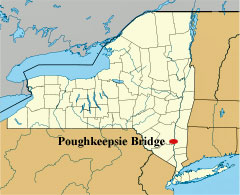
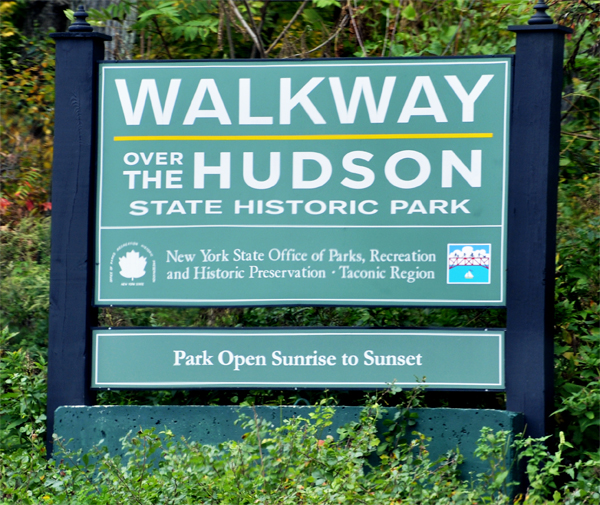
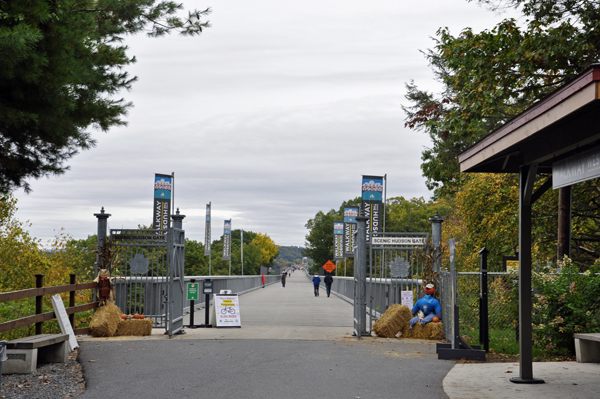
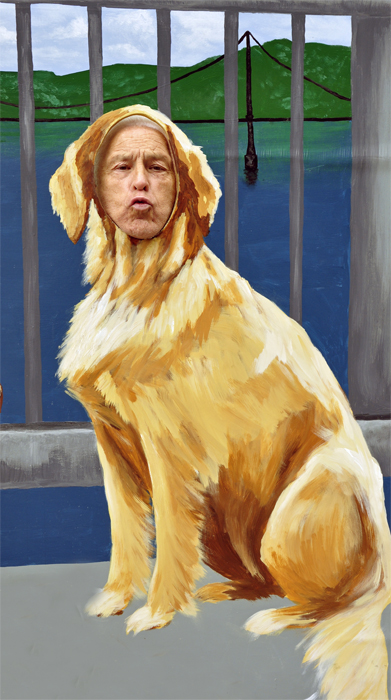
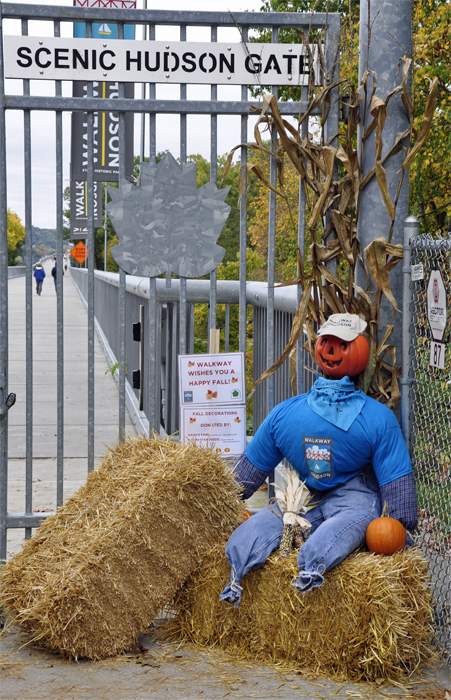
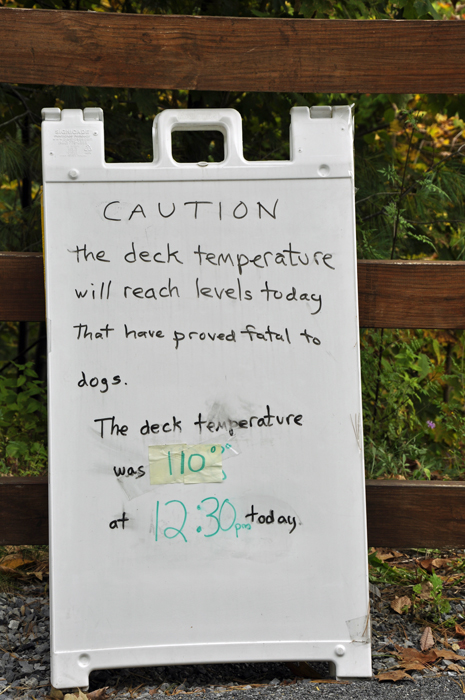
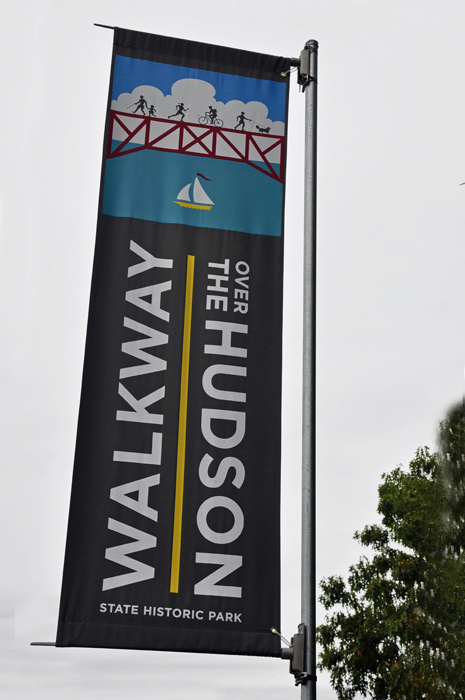
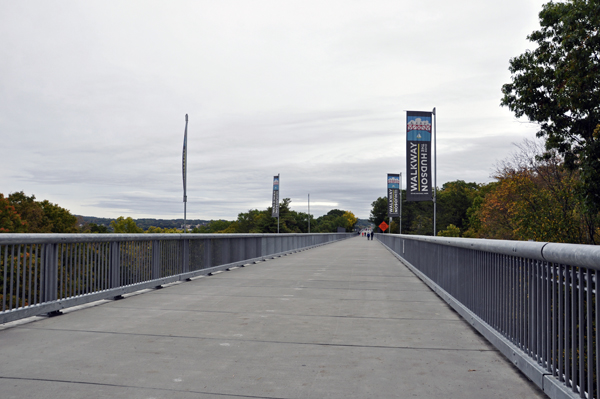
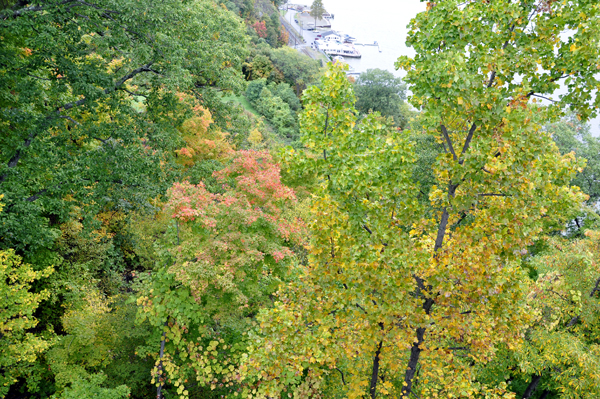
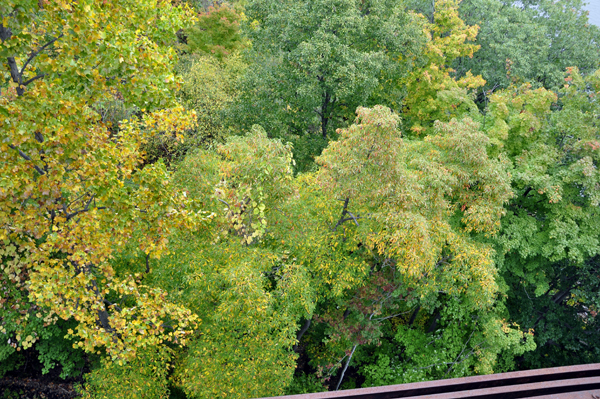

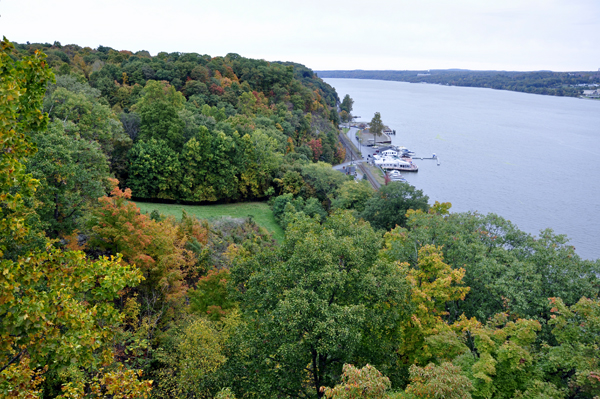
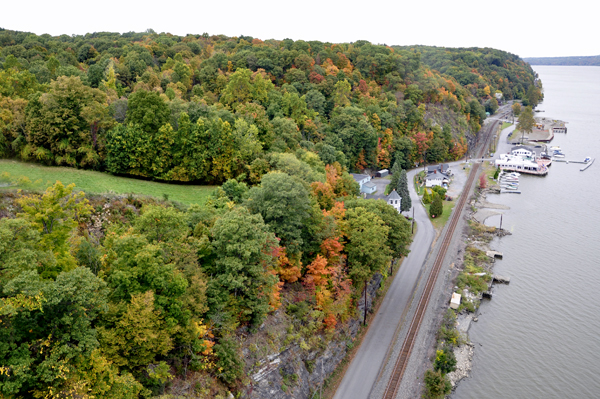

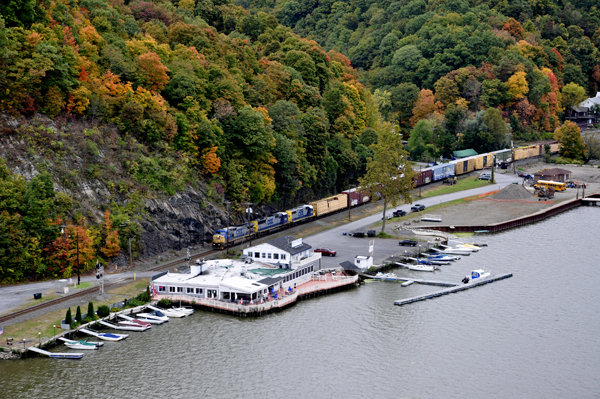


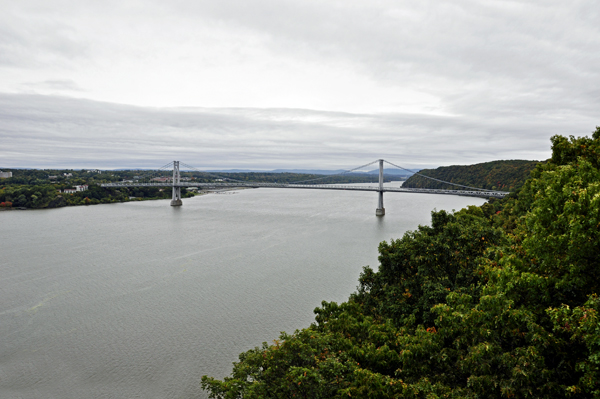
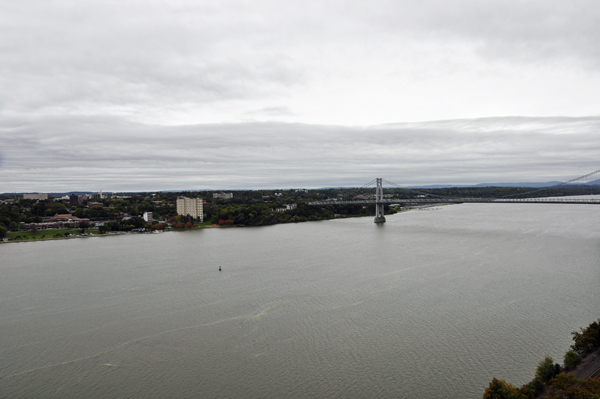
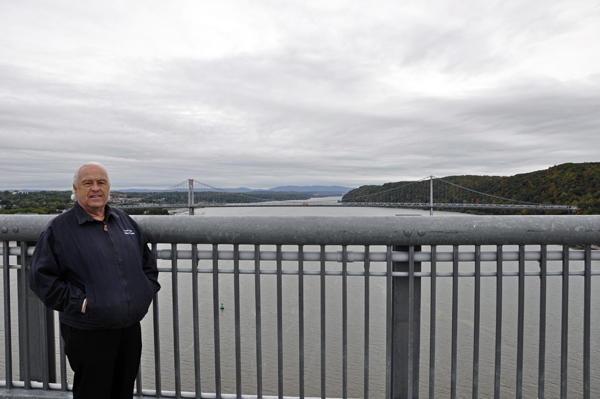
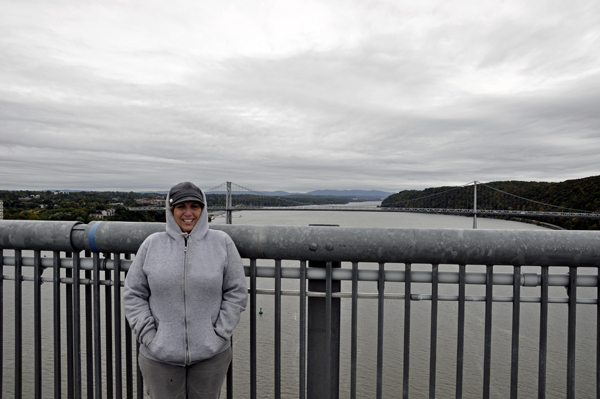
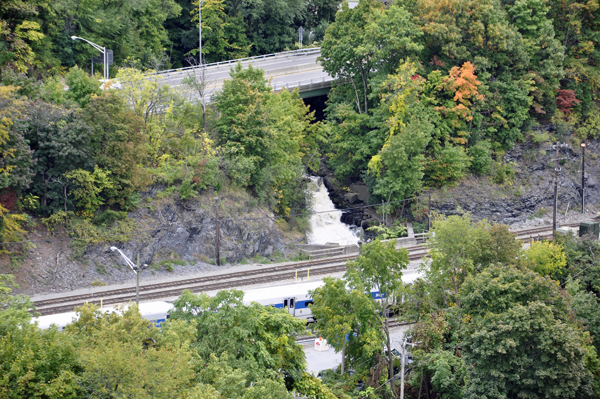
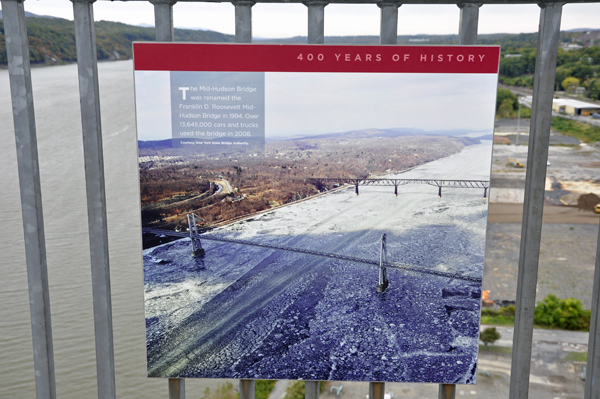
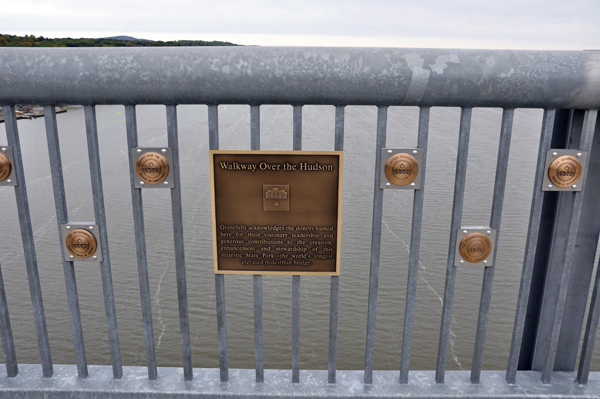
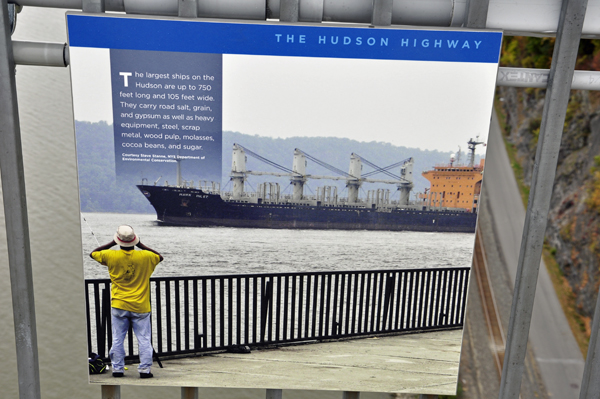
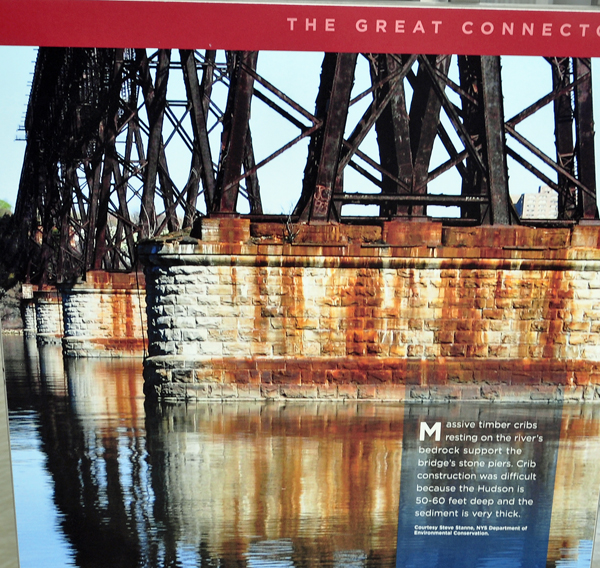
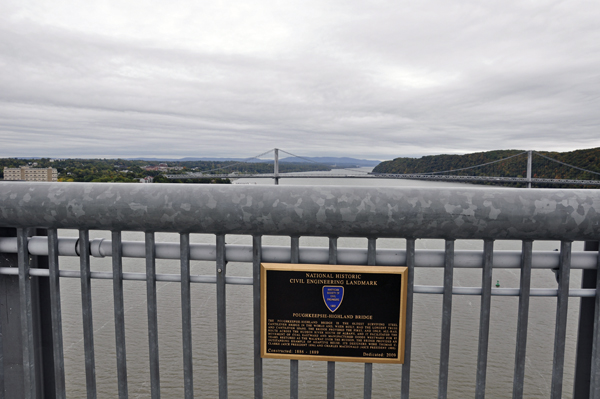
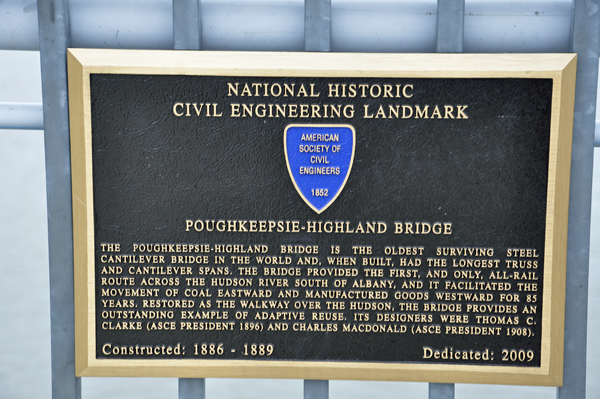
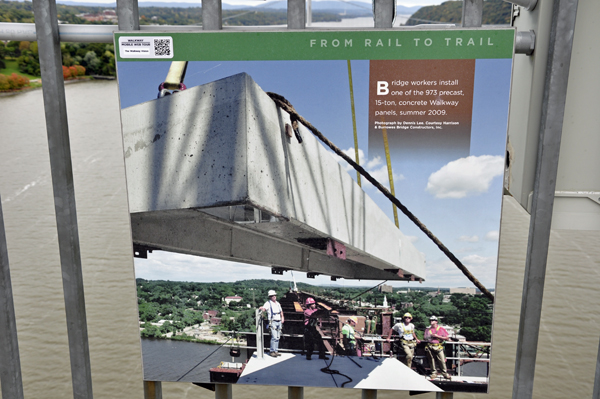
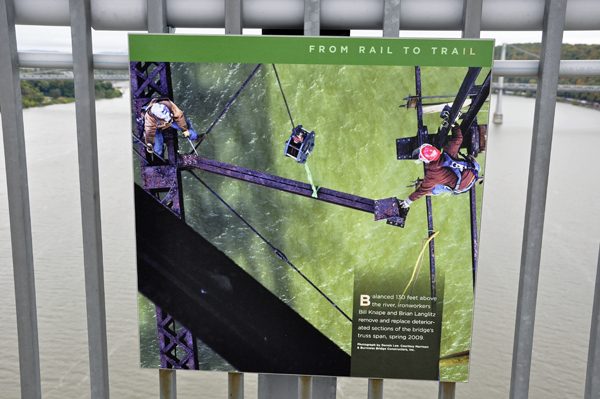
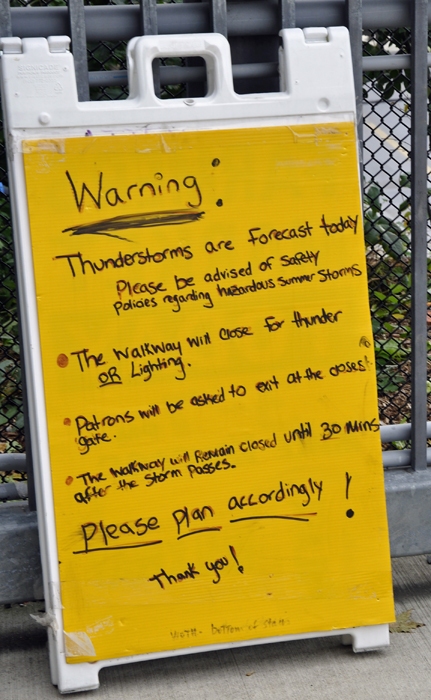

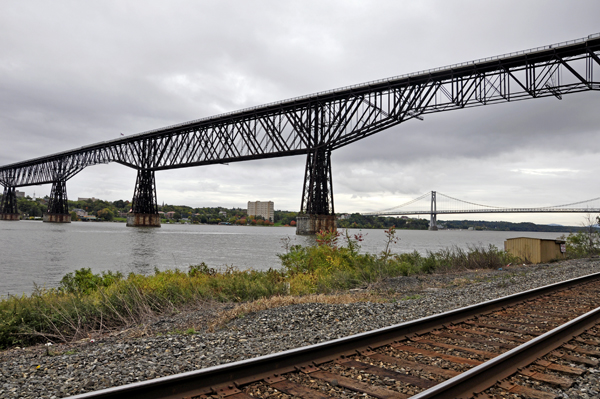
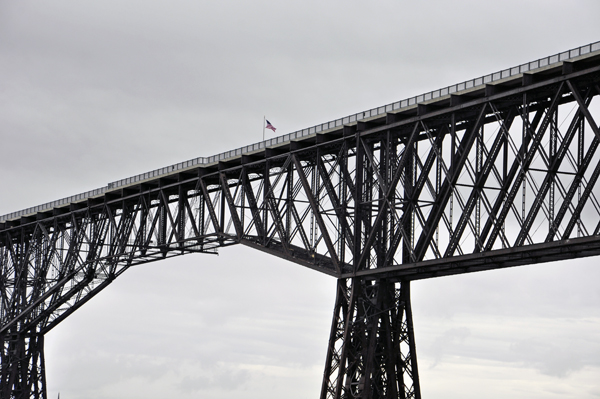


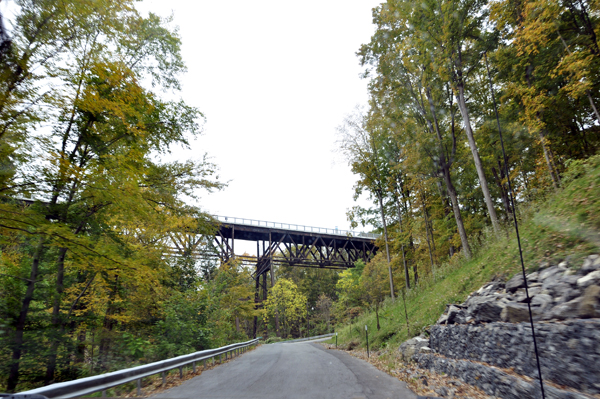























 The
Poughkeepsie Bridge (a.k.a. Poughkeepsie
Railroad Bridge, Poughkeepsie-Highland Railroad Bridge,
High Bridge) is a steel cantilever bridge spanning
the Hudson River between Poughkeepsie, New York on the east bank and
Highland, New York on the west bank. Built as a double track railroad
bridge, it was completed on January 1, 1889, and went out of service
on May 8, 1974. It was listed on the National Register of Historic
Places in 1979, updated in 2008. It was opened as Walkway
Over the Hudson State Historic Park on October 3, 2009, as
a pedestrian walkway, making it the longest footbridge in the world.
The
Poughkeepsie Bridge (a.k.a. Poughkeepsie
Railroad Bridge, Poughkeepsie-Highland Railroad Bridge,
High Bridge) is a steel cantilever bridge spanning
the Hudson River between Poughkeepsie, New York on the east bank and
Highland, New York on the west bank. Built as a double track railroad
bridge, it was completed on January 1, 1889, and went out of service
on May 8, 1974. It was listed on the National Register of Historic
Places in 1979, updated in 2008. It was opened as Walkway
Over the Hudson State Historic Park on October 3, 2009, as
a pedestrian walkway, making it the longest footbridge in the world. Lee
Duquette barked like a dog - Bad Dog!
Lee
Duquette barked like a dog - Bad Dog! 

 If you have already seen all of the sites in New York, please continue
on to
If you have already seen all of the sites in New York, please continue
on to 
